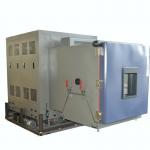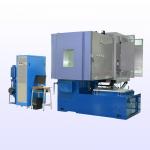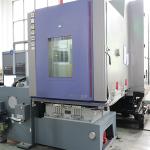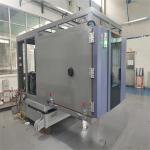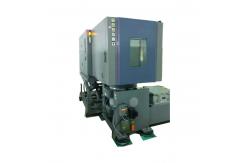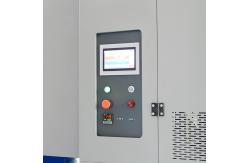In the highly demanding and critical field of weapon equipment
manufacturing, the reliability and performance of weapon equipment
components are of utmost importance. The combination of a vibration
table and a temperature humidity test chamber offers a
comprehensive and specialized testing solution tailored to the
unique requirements of weapon equipment components. This integrated
system enables manufacturers to subject these components to a wide
range of mechanical vibrations and environmental conditions,
mimicking the harsh and diverse scenarios they will encounter
during storage, transportation, and actual combat use. This advanced testing system is specifically designed for weapon
equipment components, including but not limited to electronic
modules, mechanical parts, optical devices, and ammunition
components. The primary purpose is to evaluate how these components
perform and endure under the combined influence of mechanical
vibrations and temperature humidity variations. By replicating real
- world conditions such as vibrations during transportation in
various terrains, extreme temperature changes in different
climates, and high humidity in coastal or tropical regions,
manufacturers can identify potential weaknesses in the design,
improve product quality, and ensure the reliable and safe operation
of weapon equipment. - Wide - Range Vibration Capability
- The vibration table is capable of generating a broad spectrum of
vibration frequencies, typically from 1 Hz to 2000 Hz. This wide
range allows for the simulation of different types of vibrations
that weapon equipment components may experience. For example, low -
frequency vibrations can simulate the movement of vehicles
transporting the equipment, while high - frequency vibrations can
mimic the shockwaves from explosions or the recoil of firearms. The
vibration amplitude can be precisely adjusted, with a range of 0.1
mm to 100 mm (peak - to - peak), enabling the reproduction of
various levels of vibration intensity.
- It can generate vibrations in multiple axes, including vertical,
horizontal, and rotational axes. Weapon equipment components often
experience complex three - dimensional vibration patterns. For
instance, an electronic targeting system in a tank may be subjected
to vibrations in different directions during the tank's movement
over rough terrain. The multi - axis vibration capability of the
table ensures a more realistic simulation of these real - world
conditions.
- Customizable Vibration Profiles
- Operators have the flexibility to create custom vibration profiles
based on specific test requirements. These profiles can include
continuous vibrations, intermittent shocks, or complex sequences
that mimic the actual vibration scenarios weapon equipment
components encounter. For example, a profile can be designed to
simulate the vibrations during a military vehicle's off - road
journey, including vibrations from driving over bumps, potholes,
and through rough terrains, as well as the vibrations during sudden
stops and starts.
- High Payload Capacity
- Given the often - large and heavy nature of some weapon equipment
components, the vibration table is designed with a high payload
capacity. It can typically support loads ranging from a few
kilograms to several tons, depending on the model. This allows for
the testing of full - scale or representative components of weapon
systems, ensuring that the test results are relevant and applicable
to real - world situations.
- Extensive Climate Simulation
|
